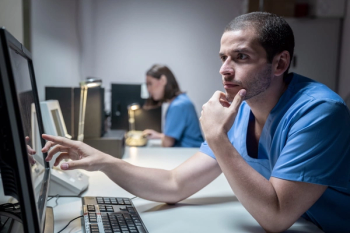
CT colonography’s extracolonic findings demand attention
The majority of patients at one institution who underwent a virtual colonoscopy procedure had extracolonic findings. This could be reason enough for radiologists to be involved in interpreting virtual colonoscopy exams.
The majority of patients at one institution who underwent a virtual colonoscopy procedure had extracolonic findings. This could be reason enough for radiologists to be involved in interpreting virtual colonoscopy exams.
Investigators were surprised by the fact that more than 60% of the 500 patients in the study had extracolonic findings. A relatively large percentage (9%) of those patients had clinically important findings, said lead author Dr. Judy Yee, chief of radiology at the Veterans Affairs Medical Center in San Francisco.
Virtual colonoscopy can safely identify cancers and other diseases outside of the colon - kidney cancers, other masses in solid organs, adenopathy, and aneurysms - that would be missed by conventional colonoscopy, Yee said.
"This study stresses the importance that radiologists interpret this type of study. There is important information outside of the colon that requires specific training to detect," she said.
Yee and colleagues performed virtual colonoscopy in 500 men: 194 had an average risk for colorectal cancer, and 306 were at high risk. The study was published in the August issue of Radiology.
The researchers found that out of 596 extracolonic findings detected, 50 were clinically important. Fourteen of these 50 findings had already been diagnosed before the virtual colonoscopy exams. Of the 35 patients with the 36 remaining findings warranting follow-ups, five underwent surgical treatment for the following:
- renal cell carcinoma
- liver abscess
- abdominal aortic aneurysm
- common bile duct stone
- left internal iliac artery aneurysm
The mean additional cost for following up important findings was $28.12 per virtual colonoscopy exam, a relatively low amount when weighed against the benefits of the changes made to patient care, according to Yee.
The authors concluded that detection of potentially serious asymptomatic lesions at an early and curable stage can prompt meaningful medical follow-up or surgical intervention, ultimately leading to decreased morbidity and mortality.
Additional studies need to be performed, however, to evaluate the cost-effectiveness to follow up both colonic and extracolonic lesions, Yee said. Additional evaluation of the use of intravenous contrast for the detection of extracolonic findings is also needed.
For more information from the Diagnostic Imaging archives:
Newsletter
Stay at the forefront of radiology with the Diagnostic Imaging newsletter, delivering the latest news, clinical insights, and imaging advancements for today’s radiologists.




























